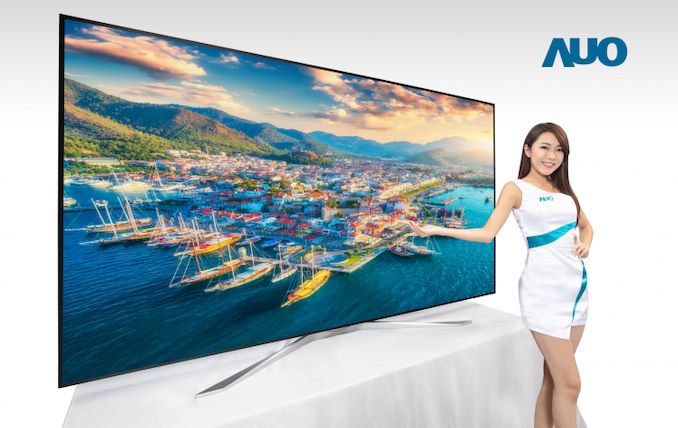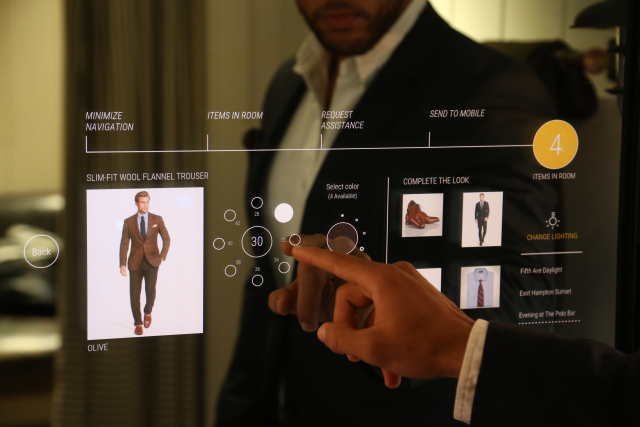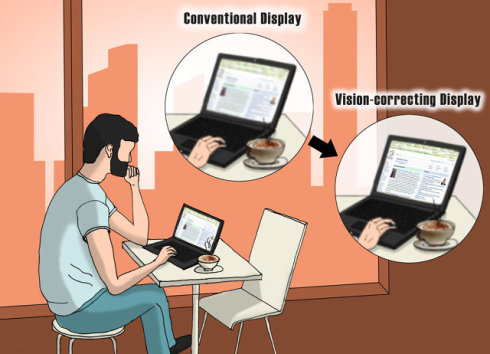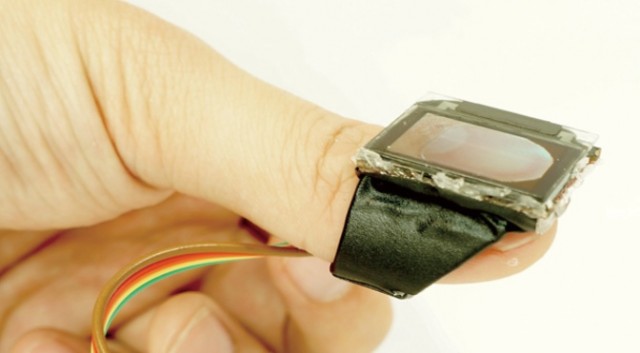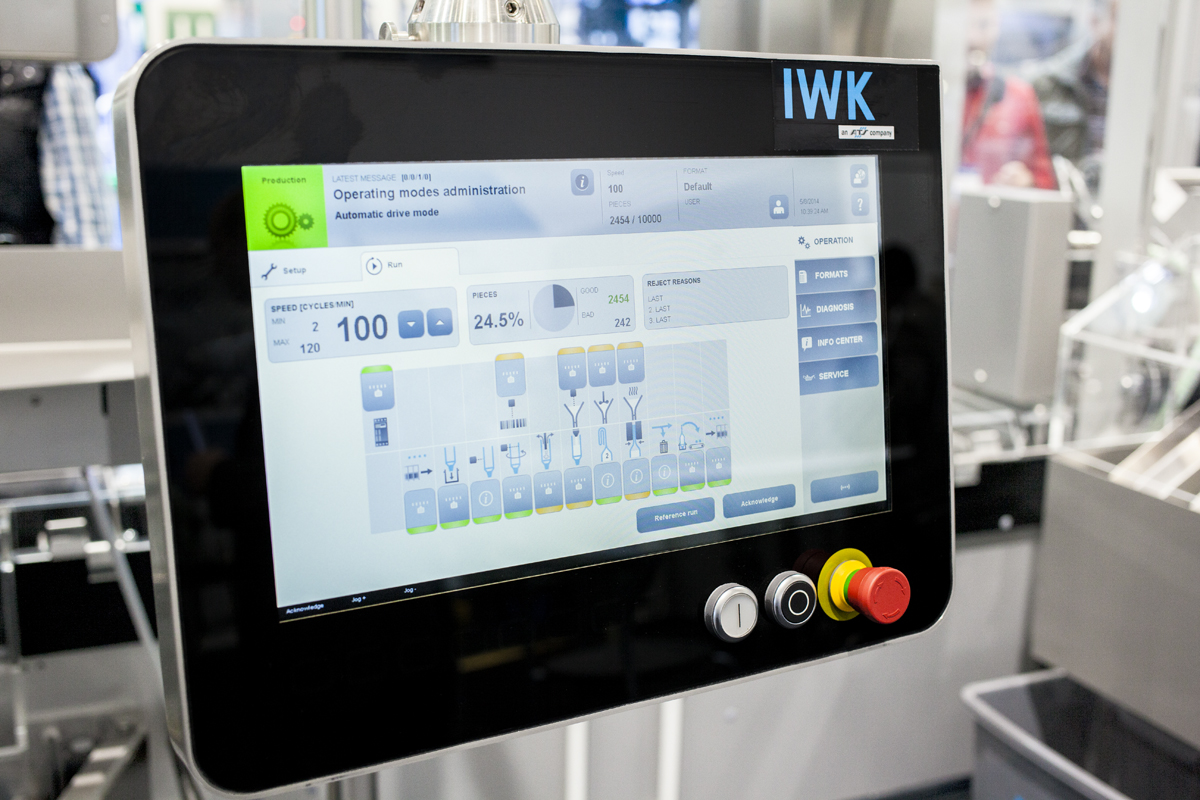
Image via HMI Project
Why mobile and touchscreen HMI are the future "Concurrent with the trend to consumerize HMI, we're seeing an increase in mobilized HMI. Not surprisingly, given all these new devices connecting to the plant, security is becoming an issue. Other HMI trends include TVized large flat screens, increased use of thin clients, a broader view of data on the screen, and everything HMI coming at a cheaper price. ...Another aspect of HMI attractive to young engineers is TV-like screens. "We have graphics on 19-inch monitors that can be used on the machine. It's not a touch panel, but most shop guys don't like touchscreens," Randy Pearson, international business development manager at Siemens, said. "Touch is still new to all of us. Newer and younger engineers will bring touch in, and then it will be prevalent."" via Design News
How Polaroid used LCD technology to avoid becoming irrelevant "Polarized technology, which was invented by Polaroid Founder Edwin H. Land was first used in goggles supplied to World War II pilots and has since been used in nearly every aspect of visualization, including the polarized sunglasses we wear today. ...With these three traits in mind: visualization, sharing and affordability, Polaroid went out on a venture to find new product categories that would embody the essence of the brand. ..."Every LCD flat-screen television has a polarizer on it. It’s a core component of the technology that allows you to view the picture on a flat-screen TV," says Hardy. Fulfilling the visualization component of the Polaroid brand as well as the concept of sharing and affordability (by making the televisions at a price point that would appeal to the masses), flat-screen televisions hit on all of the brand attributes Polaroid identified, making this product category a natural fit." via Fast Company
How do 3D displays work? Passive, active, glasses and glasses-free 3D "Active 3D works on plasma and LCD TVs and requires a set of powered glasses to make the 3D image. ...These active glasses work by having lenses that have a liquid crystal layer applied to them. When voltage is applied to the lens, it turns almost completely opaque; without, they are almost completely clear. There is some light loss when you're looking through the lens even without a current applied, and it's this that can make the TV image seem a bit darker when you're watching with them on. ...To produce a 3D picture, the TV displays the image for the left eye, then the image for the right eye. While it does this, the glasses shut out the light to the opposite eye. This happens 24, 25 or 30 times per second for each eye, so it is nearly impossible for you to tell it's happening, although some people do complain of flickering, and this might be why there are reports headaches with active 3D for a minority of users." via Expert Reviews
How MIT Is Building an Affordable Hologram-at-Home System "Over the past three years, researchers in the Camera Culture group at the MIT Media Lab have steadily refined a design for a glasses-free, multiperspective, 3-D video screen, which they hope could provide a cheaper, more practical alternative to holographic video in the short term. Now they’ve designed a projector that exploits the same technology, which they’ll unveil at this year’s Siggraph, the major conference in computer graphics. The projector can also improve the resolution and contrast of conventional video, which could make it an attractive transitional technology as content producers gradually learn to harness the potential of multiperspective 3-D. (Video)" via MIT News
How to create your own privacy display "The necessary materials are an old LCD monitor, superglue, paint thinner (or another solvent), paper towels, a screwdriver or drill, a pair of old glasses, and an x-acto knife or box cutter. If you follow the steps below, posted on Instructables by Dimovi, an electrical engineer based out of Austin, you can easily create your own privacy monitor. You’ll be free to have covert TV-watching and web surfing experiences in no time." via psfk
Sony sidelines OLED TVs for 4K sets "South Korean rivals LG Electronics and Samsung Electronics have moved ahead of the Japanese company in this field. Sony does not see real demand for OLED TVs taking off anytime soon, whereas its 4K LCD TVs are generating revenue now and could help its TV business return to the black for the first time in 11 years in the year to March 2015. 4K TVs are priced around 100,000 yen ($970) higher than regular flat-panel TVs." via Nikkei Asian Review
Will bigger displays bump Apple past Samsung? "In fact, smartphones with a five inch and larger screen increased 369 percent, a growth rate that is much higher than the market in general. Devices in this category made up 34 percent of shipments, including a high of 43 percent in Asia Pacific. ...This appears to be bad news for Apple Inc., right? Yes and no. For now, since its screens are on the small size, this is definitely holding the company back. Moving forward, when Cupertino decides to “go big,” it will be in position to make up a lot of ground in a relatively short period of time. In other words, you can guarantee that Samsung is not looking forward to the day that Apple rolls out a larger screen." via The Bibey Post
Display database for engineers Search thousands of display panels by multiple characteristics and compare results side-by-side using the display database multisearch.
Are mobile resolutions really that important these days? "The QHD display from LG isn’t something to sneeze at, but I do think it’s a waste for mobile technology. Even on a 5.5-inch screen, a 2560x1440 resolution seems like it’s total overkill. On a bigger screen, like for a computer or especially a TV, then yeah, that kind of resolution would be really nice; but a smartphone? Even on my HTC One, which has a 1080p display, is damn near impossible to tell where one pixel ends and where another begins. The clarity of phones is fine. What we need now is better battery life, stronger phones, and really just about anything else on a phone. But the naked human eye, even with perfect vision, will only ever be able to see so far. I’m pretty sure we have already reached that point when it comes to mobile displays. I’m pretty sure we’ve already passed it, even before this point." via PhoneDog
How digital signage is revolutionizing automotive showrooms "The dealership's [Audi City in Mayfair, central London] star attractions are the four so-called powerwalls -- nearly floor-to-ceiling screens that display a customer's chosen car. The powerwalls, created from 36 backlit LED display screens almost seamlessly joined together, are linked to high-definition touch screens mounted on tables where cars can be configured. Consumers choose the model, color, engine and other specifications on the table, then swipe the screen to send the completed car to the wall. There they can spin it around, peer inside, open the doors and trunk and even watch it drive off, complete with authentic engine noises. As with the latest iPad interaction, commands are instantly and smoothly relayed. The effect is mesmerizing. ...According to Audi, digital technology has had a powerful effect. Sales at Audi City London are up 60 percent from the traditional Audi showroom that previously occupied the site, Hanschur says, without giving exact figures." via Automotive News
What is OLED? The next wave in display technology "When color television debuted in the 1960s, picture tubes made color by electronically combined light from red, green and blue pixels. Today's dominant big-screen TVs use liquid crystals to switch a source of light on or off behind pixels. In OLED displays, "blue is the weak link, from a life and energy-efficiency perspective," said Mahon. "It's a high priority to develop deep, long-lived blue OLEDs to complete our suite of colors." Red and green OLEDs are rated to last more than 20 years, but blue lasts only about four years. Blue OLEDs used in smartphones and other devices are fluorescent OLEDs, a different type that aren't as efficient, Mahon said, and are made by a half-dozen companies, such as Dupont and Idemitsu Kosan of Japan." via CED Magazine
How can avionic displays be safer? Engineers find way to lower risk of mid-air collisions for small aircraft "At issue are cockpit displays of traffic information (CDTIs). These are GPS displays used by private pilots to track other aircraft in their vicinity. However, pilots often focus on the closest aircraft on the display—a habit that can pose a significant hazard. ...Researchers modified the CDTI so that the plane that would cross a pilot’s path first either began blinking or was colored yellow. The researchers tested the modified CDTI in a flight simulator with a panel of licensed recreational pilots. The research team compared the pilots’ response times and decision-making accuracy when using the modified and unmodified displays." via R&D Magazine
How will new military displays help soldiers on the battlefield? "The Q-Warrior, the latest version of BAE Systems’ helmet-mounted display technology, looks like a fighter pilot’s head-up display but has been specially designed for the soldier who needs unique capabilities, such as identifying hostile and non-hostile forces, as well as coordinating small unit actions. Paul Wright, Soldier Systems’ business development lead, and Mark Wilkins, project technical lead for Q-Warrior, explain: “Q-Warrior increases the user’s situational awareness by providing the potential to display ‘eyes-out’ information to the user, including textual information, warnings and threats."" via IHS
How will the Apple touchscreen develop? New Patent Shows Hints "Just over a year ago, the first detail of a patent describing a potential wraparound display for an Apple device cropped up. In the diagrams, the device had a screen that went clear around the sides and looped over the back as well, covering most of the phone except for the top and bottom. Though that patent came out well before the iPhone 5S, it may have been too soon for Apple to put the design into practice, as flexible screens and tech has a ways to go yet — as can be seen by Samsung (SSNLF.PK) and LG’s “flexible” smartphones that bend just a few degrees. The design, though novel, also seemed a bit impractical, as very few people can reasonably need a phone with a screen they can only see half of at any given time. This latest patent blends a bit of the novelty of the earlier design with more practicality. Rather than suggesting a screen that wraps all the way around the device, it stops short, only going partway around one side or both [sidewall]." via Wall St. Cheat Sheet
Do you have content to share with Display Alliance? Anyone can post press releases, white papers, commentary, videos, and more in the open section.
How is digital signage taking creativity to new levels? Interactive street display brings TV show to life "Live Vinyl is a display technology developed by Future Colossal, and it is employed in this case to create a living, breathing version of an intersection in Victorian London with carriages darting by, fog rolling in and birds flying about. The technology was inspired by the artwork of Jim Campbell, who is known for working with LED light installations, and incorporates techniques used in projection mapping. “We align the images of an ultra high-resolution print with an image rear-illuminated by low-resolution LED walls,” Lee-High explains. “The LED walls bring life to the printed image by changing dynamic lighting, creating effects and showing AI [artificially intelligent] characters.” “When viewing the display, one looks both at and through the image,” according to Lee-High. “It is an effect the people have not seen before, and it is fun to watch them try and figure out the magic that is making it visible." (Video)" via Fast Company
Intel creates floating display "Intel Corporation has come out with a 3D interface that allows users to make interact with devices by touching illusions created in the air. The technology creates an interactive 3D illusion with the help of a 3D camera and a special type of glass, says a report from BBC. ...In the near future, such technology could be located in public places like cash dispensers or photo booths; providing a more secure and hygienic experience, according to its developers." via ValueWalk
Innolux becomes world leader in displays for automotive market "Innolux at the end of last year managed to best its closest competitors, Japanese firm Japan Display Inc. and Sharp Co., and maintained its advantage over South Korea's LG Display, ranked fourth in the world in the sector. In fifth place in automobile screen sales at the end of last year was Taiwan's AU Optronics Corp., with 11 percent of the world market share, which - combined with Innolux's 23 percent - gives Taiwan more than 34 percent of global sales. ...The rapid expansion of the market for automobile accessories in China, in particular, has contributed to Innolux's increase in automobile screens." via MENAFN
Display bridge solution powers pico projector in mobile device ""One challenge of embedding pico projectors into smartphones is the lack of processor support for both a display and a pico projector," said Paul Karazuba, Quicklogic's senior product marketing and media manager. The QuickLogic ArcticLink III BX6 allows the single display interface signal from the device's applications processor to be duplicated and bridged so that it can drive both embedded display and the integrated pico projector." via NewElectronics
How can marine displays be improved? "Innovations in computer display technology would seem to have recently hit a plateau. With the advent of LCD panels, improvements in computer displays have recently been limited to larger screens, higher pixel resolution, greater energy efficiency, and lighter, more efficient use of base resources. Yet there remains two areas where computer display manufacturers can continue to offer improvements: the human-machine interface, and local display intelligence. To offer the most effective solutions, improvements should maximize their utility with improvements in performance for specific environmental conditions. There are several features a computing display can bring to embedded computing stations aboard ships, or ocean platforms; in particular, the two most glaring problems for users when out at sea are low-light environments, and the technical ignorance of the average user when faced with crashes or machine malfunctions. Advances in the display interface can lessen the effects of these problems and much improve the user experience. " via MarineLink
Pepsi Rivals Coke's Freestyle With Touchscreen 'Spire' Debut "Pepsi Spire lets users be their own mixologists to create up to 1,000 customized beverages. ...Pepsi Spire 1.1 is a countertop self-service unit that allows consumers to create up to 40 beverage combinations using a 10" touchscreen. The 2.0 model increases variety to 500 beverage combinations and features a 15" touchscreen, and is also available as a countertop crew-service unit for restaurant staff. Launching soon is Pepsi Spire 5.0, which will allow consumers to create more than 1,000 beverage combinations using a 32" touchscreen." via Vending Times
Are you an engineer or have display expertise? Email jason@displayalliance.com to be featured in the interviews section.
What are the limits of touchscreens and how can they be fixed? "Accurate typing isn’t the only problem with touch screens and their fleeting electronic pages. Many studies suggest that people’s memory and comprehension are often better when they read long passages on paper than on screen, said Mariette DiChristina, editor in chief of Scientific American, which in August held a conference on learning in the digital age. ...Another problem with touch screens’ transitory images is that they don’t help students create a mental map of what they’ve read and what’s to come — an overview that is known to be useful in memory. “You might remember that something you read yesterday in the paper was in the middle of the page, or in the right corner,” Dr. Wästlund said. “Even though you haven’t tried to memorize position, you have built this internal model” — like the page layout of a newspaper. That kind of cognitive map or physical landscape into which readers fit new knowledge is much harder to build with fleeting e-pages." via The New York Times
Is coding games for touchscreens difficult? "Often games designed around touch will have gestures. Slice through this, slide across this path, drag through the middle of that. Games designed around a mouse will have clicks and drags, where the endpoints are the critical factor. In most respects, it is just like dealing with a pattern of points. A mouse is more about the position at the moment of click, or the moment of release: "down" and "up" positions are important, but the middle is not. With touch devices, the location of "down" and "up" are less important, usually more important are the points in between. Since it often involves slightly more processing, matching the gesture and deciding if a gesture was close enough to a range rather than just testing the coordinates at a down/up/click event, it is consequently slightly more complex." via GameDev.net
Automotive Q&A about head-up displays "Q: How do you see the US market for HUDs shaping up in terms of OEM adoption? And do you see the HUD becoming more important as a route to prevent distracting the driver too much? A: Both the US and global HUD market are in the midst of tremendous growth. Over the past several years, there haven over 20 new adoptions of HUD, as well as several car manufacturers launching their first model equipped with HUD and all market indicators suggest that growth trend will continue going forward. HUD systems enhance the overall driving experience by allowing drivers to keep their eyes on the road while still viewing critical vehicle data, minimising driver distraction. With the increased adoption of active safety features such as blind spot detection and lane departure warnings along with navigation and smart phone integration, car manufacturers seek to find a way to deliver all of this information to the driver without "overloading" them with information and causing a distraction. HUD systems are emerging as an optimal method to help combat driver distraction." via just-auto
New research examines avionic display design and regulation "Synthetic vision, and its ability to enhance situational awareness will also be a focus for NASA, according to Ellis. "One of the primary things that we're focused on particularly (is) looking at the safety enhancements. One of them is looking at synthetic vision displays and developing minimum requirements specifically in regard to how they better improve situational awareness and their potential for preventing spatial disorientation and Loss of Energy State Awareness [LESA], so that would be something that provided directly to OEMs in terms of how they make their avionics and what's required by the FAA when they're doing so," said Stephens." via Aviation Today
Ingram Micro: 'It's time to take digital signage technology seriously' "Q: Is this an untapped opportunity for resellers? What are the benefits of embracing pro AV/digital signage sales? A: Without a doubt. If you look at the traditional IT resale market, we’re seeing constantly that the print and PC markets are in decline, and now everybody is moving into managed print services (MPS). The AV market is the total opposite. If you look at the professional audio/visual market and you look at the data Futuresource and others provide, it’s all growing. Retail digital signage is growing and corporate digital signage is growing. Our message to our partners is it’s time to take that technology seriously, because it is going to be the future of how everybody communicates, regardless of the size of their business. " via PCR
Has LCD Innovation Reached the End of the Line? "LCD owns the future by default. Still, cultural evolution gives rise to a desire for new means of interpersonal communication and information consumption. And some new products will require display characteristics that have not existed in the past, at least not at reasonable cost. An example: my new Samsung Galaxy S5 has a display that is truly sunlight readable. That is a characteristic most users would want in a cell phone, but it has taken years for the industry to supply it at a consumer-friendly cost. The GS5′s display is, of course, an AMOLED. Can LCD do what the GS5′s AMOLED is already doing?" via Display Central
What did you think about today's news? Leave a comment here and share your thoughts.
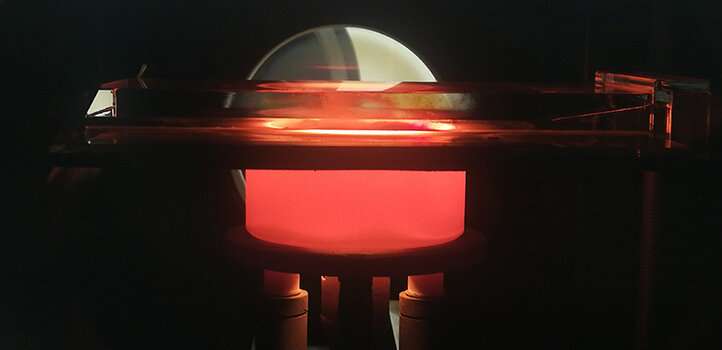
 Display Alliance
Display Alliance
